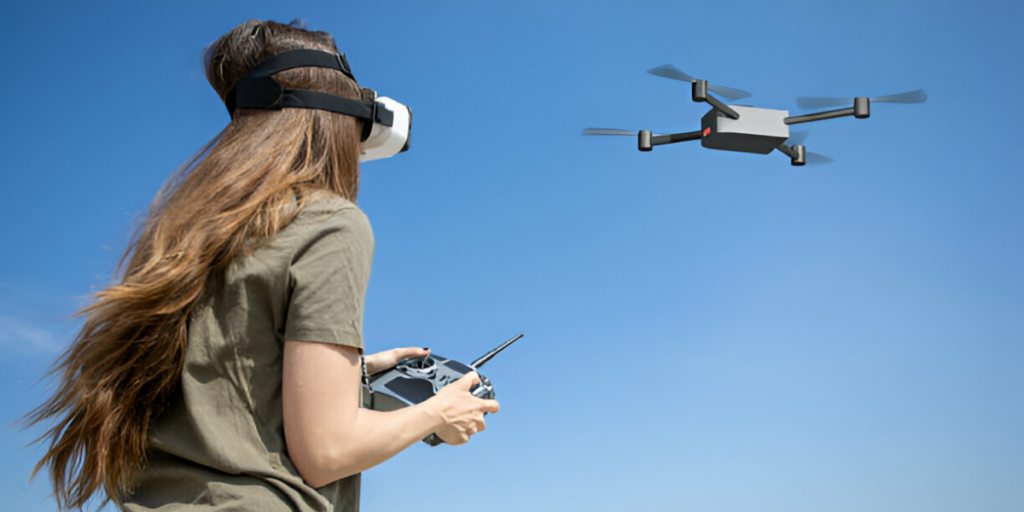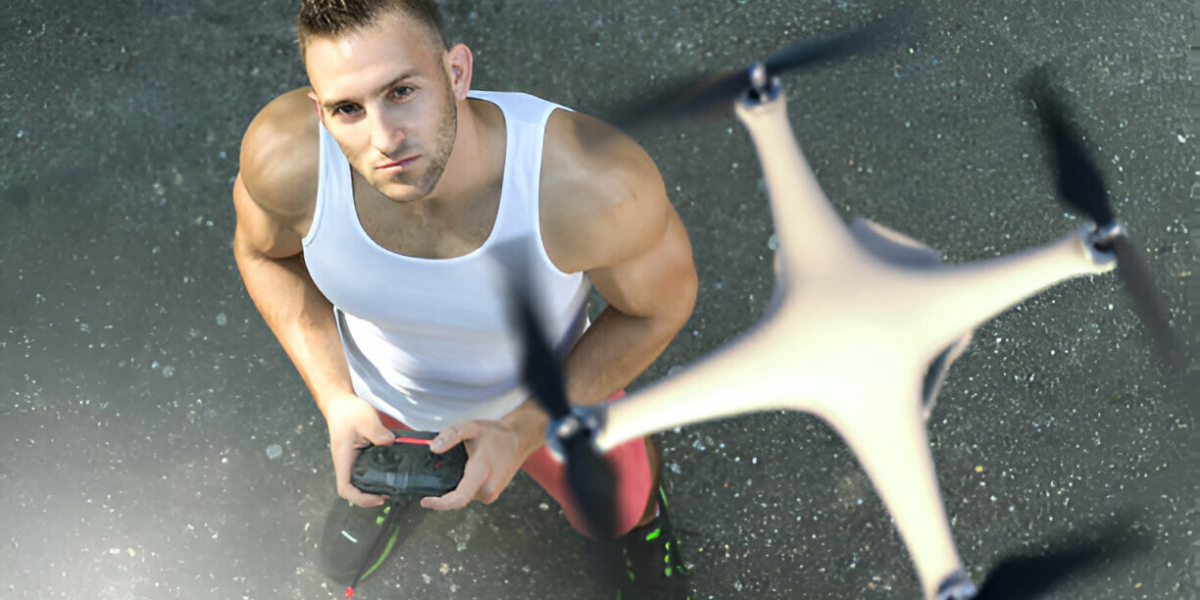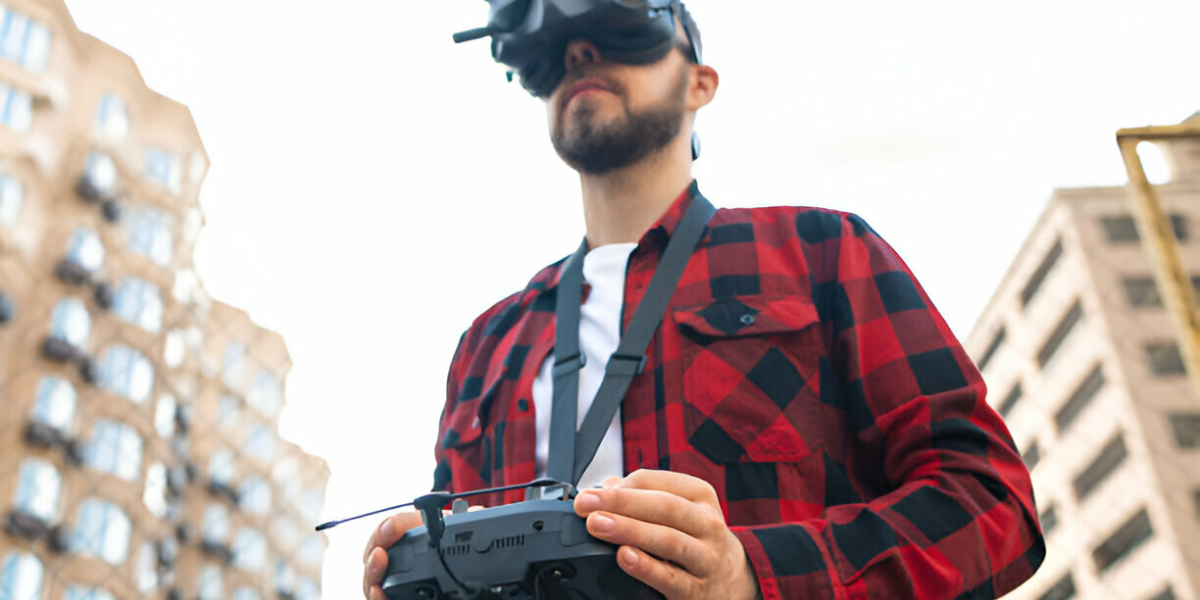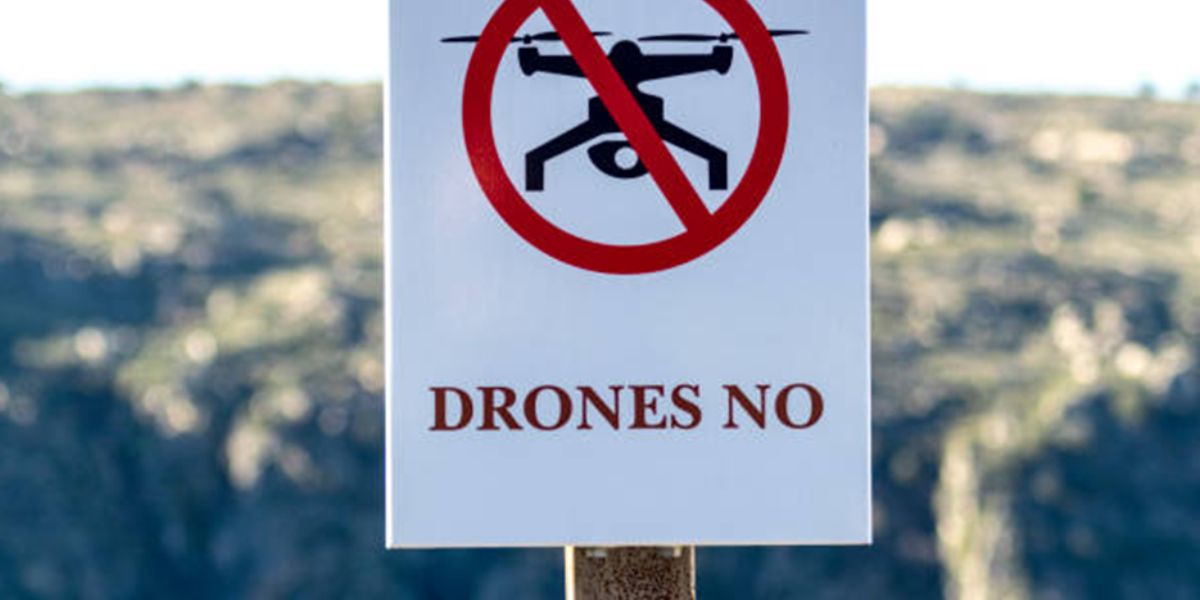Home > Drone Racing: An Exciting New Sport You Need to Know About

Drone racing has become one of the most thrilling and emerging sports in recent years. Drone racing combines the thrill of fast competition with state-of-the-art drone racing technology to fascinate both spectators and fans. This detailed blog will explore the intriguing world of drone racing, including its history, underlying technology, thrilling competition, and bright future.
The origins of drone racing may be found in the early 2010s when enthusiasts started flying drones through challenging courses using first-person view (FPV) technology. The FPV system, which sends a video feed to goggles or screens that allow pilots to see from the drone’s point of view, completely transformed the experience of flying a drone. With the help of this invention, drone pilots could now fly their machines through difficult courses at top speeds, opening the door for organized races.
In 2014, the first official drone racing competitions started to take shape. To show their mettle, enthusiasts gathered in parks, abandoned buildings, and other public areas and set up improvised courses. Drone racing leagues and competitions began to take shape as the community, and the events themselves grew more sophisticated. With the creation of the DRL (Drone Racing League) in 2015, the sport has garnered a lot of traction and aims to reach a worldwide audience.

Incredible technology that keeps advancing quickly is at the core of drone racing. Modern racing drones are engineering marvels built for precision, speed, and agility. The following essential elements stand behind drone racing:
Carbon fiber or other lightweight, strong materials are usually used in the construction of racing drones. The frame must be light enough for high-speed maneuvers but strong enough to endure collisions. Since these frames are frequently modular, upgrades and repairs are simple.
Remarkable motor and propeller performance is essential to reach the speeds required in drone racing. Because of their power and efficiency, brushless motors are frequently utilized. The speed and handling of a drone can be greatly impacted by the propeller selection. To maximize speed on certain tracks, pilots frequently experiment with different propeller sizes and pitches.
The drone’s FPV camera projects a live video stream onto the pilot’s goggles or screen, giving them a first-hand look at the flight. Pilots may navigate courses with this arrangement just like they would if they were inside the drone’s cockpit. The FPV feed must be of high quality because any delay or interference can make it difficult for the pilot to control the drone properly.
The drone’s brain, the flight controller, interprets data from sensors and the pilot to regulate the drone’s motion. Advanced flight controllers offer features like configurable flight routes, acrobatics, and stabilization. Pilots can fine-tune these controllers with software to adjust the responsiveness and handling qualities of their drones.
Racing drones are powered by lithium-polymer (LiPo) batteries, which provide high energy density and discharge rates. Pilots must carefully manage battery life so that their drones can complete the race. The capacity and voltage of the batteries are selected to balance power output and weight, often requiring pilots to make trade-offs between flight time and performance.
The pilot sends control signals to the drone’s receiver via the transmitter. The communication link’s dependability and range are critical, particularly on bigger racing courses. High-frequency radio systems, often found in the 2.4 GHz or 5.8 GHz bands, reduce interference and offer a reliable connection.
Certain cutting-edge drones come with telemetry systems that provide the pilot with access to real-time data, including drone position, signal strength, and battery voltage. This knowledge can help you make split-second judgments in a race.
Drone racing is an exhilarating sport that requires reflexes, skill, and nerves of steel. Pilots maneuver their drones up to 80 mph through courses with sharp bends, barriers, and gates. Precise maneuvering mixed with rapid speed makes for an exciting show for onlookers and competitors.
Races are usually conducted in various settings, ranging from outdoor courses through urban or woodland landscapes to indoor stadiums with neon-lit gates. The courses are meant to put the pilots’ skills to the test; they must perform precise precision on tight bends, steep climbs, and quick descents. To increase the intricacy and thrill, several races also include three-dimensional components like spirals and loops.
The first-person perspective is among the most thrilling parts of drone racing. Pilots have an aerial perspective of the competition thanks to goggles that show the live video stream from their drone’s camera. This immersive viewpoint gives them the impression that they are inside the drone, controlling the route directly. FPV drone racing is similar to piloting a fast aircraft over an obstacle course because of the sense of speed and the requirement for rapid reflexes.
The excitement of drone racing is also enjoyed by spectators, and many competitions have big displays showing the FPV feed from the top drones. This gives the spectator a close-up view of the action and the pilot’s perspective of the race. An exciting atmosphere is created by the combination of dramatic collisions, high-speed chases, and suspenseful finishes.

Drone racing has developed rapidly from a pastime to a fiercely competitive sport featuring worldwide competitions and leagues. Founded in 2015, one of the most well-known organizations in the sport is the Drone Racing League (DRL). In tournaments hosted by the DRL worldwide, professional pilots compete on complex courses in front of live audiences and millions of online spectators.
There are many additional leagues and events in addition to the DRL, like the International Drone Racing Association (IDRA), which organizes international contests, and MultiGP, which holds local and regional races. These groups have helped the sport grow quickly and gain more recognition. They offer standardized regulations, ranking systems, and organized competition formats that support the professionalization of drone racing.
Major technological companies and brands support competitive drone racing, which further propels its growth. Pilots are motivated to compete at the highest level and refine their skills by the potential large prize money for top-tier competitions. Pilots are able to concentrate on training and competition since sponsorship agreements frequently cover the cost of gear, travel, and promotional efforts.
A thorough understanding of drone technology, dedication, and practice are necessary to become a competitive drone racing pilot. A variety of skills must be developed by pilots, such as:
To navigate narrow routes and avoid obstructions, drone pilots must become proficient in precisely controlling their drones. This entails learning the controls by heart and having an instinctive grasp of the drone’s behavior.
Controlling a drone while racing at high speeds is an essential ability. Pilots hone their ability to make rapid adjustments to their drone’s trajectory to maximize speed and save time-making corrections.
It is essential to memorize a racing course’s layout to plot the fastest routes and foresee turns and obstacles. To get ready, pilots frequently review route maps and examine archived race films.
It is crucial to comprehend the technical facets of drones, including how to tune flight controllers, choose the best parts, and troubleshoot problems. Drone pilots frequently invest hours in improving their machines’ performance.
It is critical to keep your cool and focus during a race. Despite the fast-paced action and possible distractions, pilots need to maintain concentration.
Training typically involves both simulated and real-world flying. Drone racing simulators allow pilots to practice in virtual environments, which can be a cost-effective and safe way to develop skills. Real-world practice is equally important, providing tactile feedback and environmental challenges that simulators cannot replicate.

Drone racing appears to have a bright future ahead of it, thanks to growing public interest and technological developments. The following are important changes and trends to be aware of:
As drone technology advances, we can expect even faster, more agile, and more durable racing drones. Innovations in battery technology, materials science, and AI-powered flight controllers will push the boundaries of what is possible in drone racing. For example, AI algorithms could assist in optimizing flight paths and improving pilot training.
Initiatives are in place to make drone racing for beginners more approachable. In an effort to draw in more pilots, beginner-friendly courses and reasonably priced, ready-to-fly racing drones are being developed. Thanks to its inclusivity, the sport’s grassroots community will expand. Additionally, educational courses and programs are being formed to teach beginners the fundamentals of building, flying, and racing drones.
Drone racing is increasingly being integrated into the world of esports. Virtual drone racing, where pilots compete in simulated environments, is gaining popularity. This hybrid approach allows for broader participation and viewership, as races can be streamed online to a global audience. Virtual reality (VR) technology may also improve the spectator experience so that viewers can immerse themselves in the race from the pilot’s perspective.
One method for getting children interested in STEM (Science, Technology, Engineering, and Mathematics) education is drone racing. Educational institutions and programs include drone racing in their curricula to impart computer science, engineering, and physics concepts in an entertaining and dynamic manner. This strategy develops the next generation of drone racing pilots and engineers while simultaneously promoting interest in STEM areas.
The importance of sustainability is increasing as the sport develops. Efforts are being made to reduce the environmental effects of events and create environmentally friendly racing drones. This fits well with the larger trend of sustainability in technology and sports. Innovations like biodegradable drone parts and sustainable energy sources to power racing events are being explored.
Drone racing is expected to become more professional in the future, with more organized training courses, certification programs, and career paths appearing. As a result, aspiring pilots will be able to pursue careers in the sport and improve their talents methodically.
Drone racers are a lively and varied collection of fans who are passionate about both flying and technology. Innovation, competitiveness, and a sense of community define the drone racing culture. Pilots frequently work together, share drone racing tips, and encourage one another to strive for greatness.
Pilots can interact, share ideas, and plan activities on platforms such as social media groups, local clubs, and online forums. These communities, which provide a sense of belonging and support among themselves, are vital to the sport’s growth and development.
Drone racing is an interesting and quickly expanding sport, but there are a number of issues to take into account:
Drone use is governed by tight laws to protect privacy and safety, particularly in cities. Depending on the locality, navigating these regulations can be difficult. Pilots and event planners must comply with local regulations and secure the required licenses.
Drone racing at high speeds puts property, spectators, and pilots in danger. It is necessary to provide safety by using appropriate course design, safety equipment, and emergency procedures. Additionally, pilots are urged to follow safety regulations and fly responsibly.
Addressing the effects of drone racing on the environment, including noise pollution and possible harm to wildlife, is necessary. Eco-friendly technologies and sustainable activities can help lessen these effects.
High-performance racing drones can be expensive and complicated for beginners, which might be a barrier. Reducing expenses and streamlining technology are critical to increasing accessibility to the sport.
The sport’s expansion depends on public perception and increased mainstream media attention. Emphasizing its advantages, such as its educational value and technological breakthroughs, can help build a positive image of drone racing.

The exhilaration of cutting-edge technology combined with the pleasure of fast-paced competition makes drone racing such an exciting sport. From its modest beginnings as a recreational pastime to its current standing as a professional sport with a global audience, drone racing has captivated the attention of both pilots and spectators.
With the advancement of technology and more accessibility to the sport, drone racing appears to have a bright future ahead of it. It offers an unmatched experience that will keep you on the tip of your seat, regardless of your level of experience as a pilot, your passion for technology, or just your search for a new and exciting sport to watch. If you are on the lookout for the best drones for racing, check out the best camera store in Pakistan, Golden Camera. Whether you need a drone camera in Pakistan or its accessories, we are a one-stop solution for you.
Monday – Saturday:
11:30 AM – 9pm
Copyright © 2025. All Rights Reserved.
Website Powered By DABBS Solutions Pvt. Ltd.
Social Chat is free, download and try it now here!